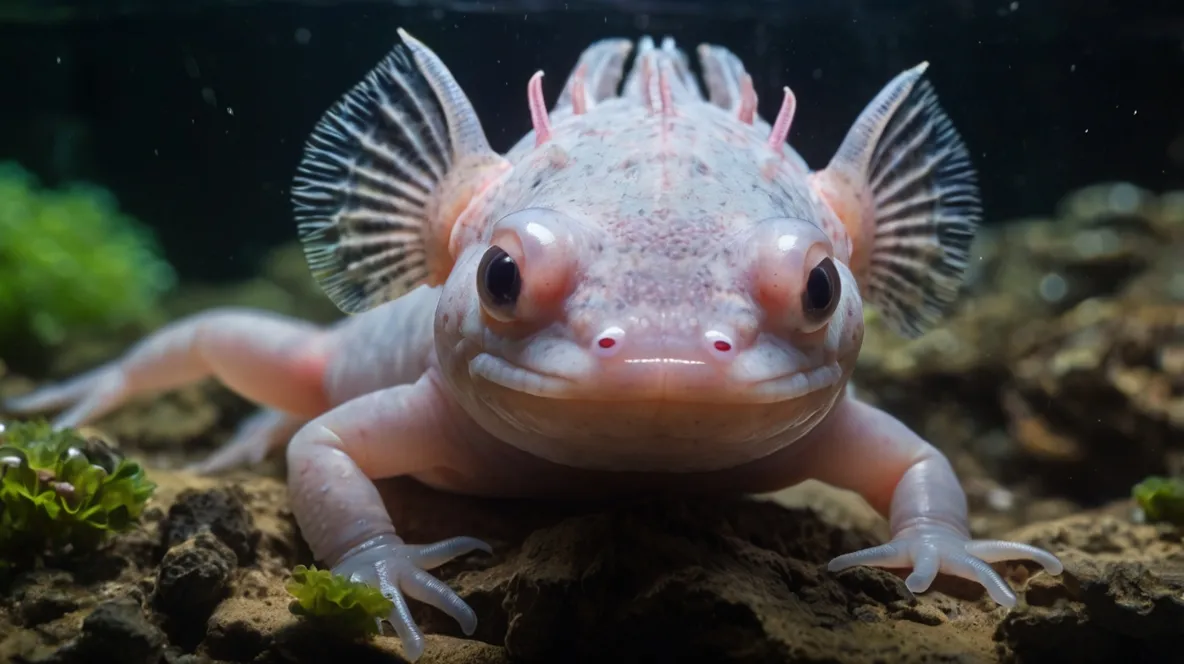Axolotl Interaction & Observation Guide
Interacting With Your Axolotl
Axolotls are fascinating fully aquatic amphibians known for their unique appearance and regenerative abilities. They are best considered **observational pets** and should **NOT be handled** except in emergencies. Their skin and delicate external gills are easily damaged, and removing them from water is extremely stressful and harmful.
WARNING: DO NOT HANDLE AXOLOTLS. Axolotls have extremely sensitive skin lacking scales and a protective slime coat easily damaged by touch. Their external gills are fragile. Handling, especially out of water, causes immense stress, potential physical injury, and can disrupt their skin integrity leading to infections. Interaction should be purely visual.

Understanding Axolotl Sensitivity
Axolotls require a specific, stable aquatic environment and gentle care.
- Fragile Gills: The feathery external gills are vital for respiration and easily damaged by handling or poor water quality.
- Sensitive Skin: Their skin is permeable and lacks protection, making them vulnerable to abrasions, infections, and chemical irritation from hands.
- Stress Response: Handling, sudden movements, bright lights, or poor water conditions cause significant stress.
- Aquatic Life: As fully aquatic animals, removing them from water is inherently dangerous and stressful.
Appreciating Axolotls Through Observation
The primary way to enjoy axolotls is by watching their unique behaviors in the aquarium.
- Tank Setup: Provide a spacious tank with cool, clean water, low flow, hiding places (caves, pipes), and soft substrate (fine sand or bare bottom – avoid gravel).
- Watch Them Move: Observe their slow, deliberate movements along the bottom, occasional swims, and the gentle waving of their gills.
- Feeding Time: Watching them eat (earthworms, pellets) can be very engaging. They often “snap” at food with surprising speed.
- Individual Personalities: Some axolotls may learn to associate your presence near the tank with food and might swim towards the glass.
- Photography/Videography: Capture their charm through the glass without disturbing them.
Interaction Through Care
Interact indirectly by maintaining their pristine environment.

- Water Changes: Perform regular partial water changes diligently to maintain excellent water quality (low ammonia, nitrite; moderate nitrate).
- Feeding: Offer food using tongs, a turkey baster, or by dropping it near them. Avoid leaving uneaten food to rot.
- Tank Cleaning: Clean the tank surfaces and substrate carefully, minimizing disturbance to the axolotl.
- Temperature Control: Ensure the water temperature remains consistently cool (typically 60-68
- Necessary Netting (Rare): If you absolutely must move the axolotl (e.g., vet visit, tank overhaul), use a soft, fine-mesh net designed for fish. Be extremely gentle and quick, minimizing air exposure. Transferring within a container of tank water is preferred.
Recognizing Stress in Axolotls
Monitor for signs of stress related to their environment or health.
- Curled Gills: Gills curled forward consistently can indicate stress, often from poor water quality or high flow.
- Loss of Appetite: Refusing food is a common sign of stress or illness.
- Erratic Swimming/Floating: Unusual swimming patterns or difficulty staying submerged can signal problems.
- Skin Lesions/Fungus: Any visible sores, redness, or fluffy patches (fungus) require immediate attention and likely indicate poor water quality or injury.
- Pale or Faded Gills: Loss of color in gills might indicate poor water parameters or anemia.
Admire, Don’t Touch: Axolotls thrive in a stable, clean, cool aquatic environment. Your best interaction is providing excellent care and enjoying their unique beauty and behaviors from outside the tank. Handling poses serious risks to their health.